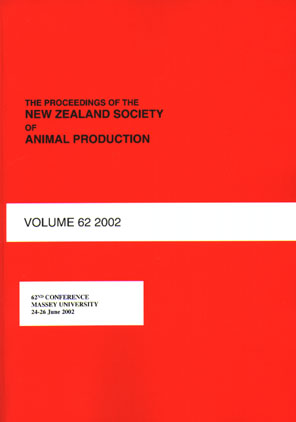Abstract
The study involved 128 animals (19 Carpetmasters, 20 Drysdales, 19 Elliottdales, 20 Merinos, 23 Romneys and 27 Tukidales) maintained on improved pastures at Oberon, on the central tablelands of NSW. For the intake measurements, animals were stratified on liveweight into five groups within breed, and one animal selected from each group at random for dozing with controlled-release alkane capsules. The intake of Romneys (1.30 kgOM/day), Merinos (1.20) and Tukidales (1.18) was significantly (P<0.05) higher than that of Carpetmasters (0.98), Drysdales (0.78) and Elliottdales (0.80). There was no significant interaction between breed and season, with all breeds having a lower (P<0.01) intake in July (0.63) kgOM/d) than February (1.43 kgOM/d). When the intakes were expressed in terms of metabolic liveweight, there was again a highly significant difference between the intake in February and July (0.078 and 0.040 kgOM/g/LW0.75, respectively). On a metabolic liveweight basis breed differences also still existed, with Merinos (0.082) having higher (P<0.05) intakes than the other breeds.
Proceedings of the New Zealand Society of Animal Production, Volume 55, , 88-90, 1995
| Download Full PDF | BibTEX Citation | Endnote Citation | Search the Proceedings |

This work is licensed under a Creative Commons Attribution-NonCommercial-NoDerivatives 4.0 International License.

